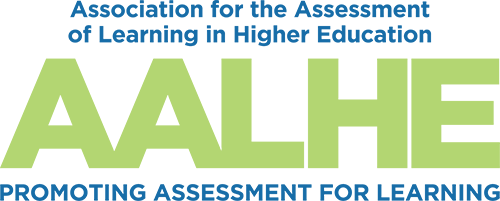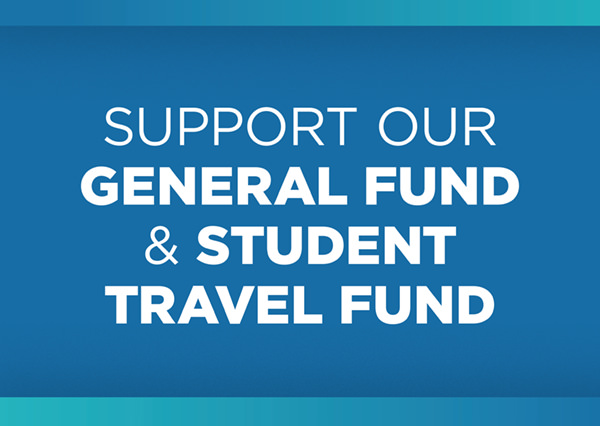- Home
- About AALHE
- Board of Directors
- Committees
- Guiding Documents
- Legal Information
- Organizational Chart
- Our Institutional Partners
- Membership Benefits
- Member Spotlight
- Contact Us
- Member Home
- Symposium
- Annual Conference
- Resources
- Publications
- Donate
EMERGING DIALOGUES IN ASSESSMENTAssessment Professionals as Change Agents: Enhancing Equity in Our Own Backyard
April 3, 2023 Glenn Allen Phillips, Watermark Insights In the last five years “equity” has been buzzing around the assessment world; however, the problem with buzzwords is that if there is too much buzz the buzz turns into a mindless drone. Institutional effectiveness professionals have been called upon internally and externally to be more equitable with regards to assessment. Proffered strategies for equity include engaging in culturally responsive assessment (Montenegro & Jankowski, 2017), investing in equity-focused professional development for assessment professionals (Montenegro & Jankowski, 2020), and acting on assessment data in ways that are equitable across an institution (Singer-Freeman et al., 2020). Members of the Grand Challenges in Assessment Project are currently working on ways to identify and share good practice in making assessment more equitable (Singer-Freeman & Robinson, 2020). This article explores ways that assessment professionals can immediately start making equitable changes in assessment practice at the institutional, faculty, and student levels. Institutional Actions A hallmark of an equity minded campus is an inclusive language strategy and evaluation and assessment communications and reports are no exception. For example, At Michigan State University the Vice President of Communication and Vice President and Chief Diversity Officer put together an Inclusive Communication Guide (https://brand.msu.edu/storytelling/inclusive-guide) to help ensure all communication was written from a lens of equity and inclusion. Data and assessment professionals utilized this document to ensure reports have equitable language and practices. This includes the language they used, the way they categorized data, how they identified participants in qualitative research, and the filters they provided for their Tableau dashboards. At Pierce College, assessment professionals created annual assessment documents that encouraged reflection and worked to engage folks in continuously developing and embedding equitable, inclusive, and accessible assessments and classroom practices. At Paradise Valley Community College (PVCC), assessment professionals took advantage of an exercise in creating standard operating procedures to infuse an equity mindset in their work (Ramírez & Macias, 2022). As assessment scholars have pointed out “An assessment process that is not mindful of equity can risk becoming a tool that promotes inequities, whether intentional or not” (Montenegro & Jankowski, 2020). Therefore, the college’s Assessment for Learning Team (ALT), consisting of representatives from across academic divisions, student affairs, institutional effectiveness, and the administrative executive team, reviewed the continuum of equity in assessment and selected definitions for equity-minded assessment and culturally responsive assessment to include in the charter. Using the components and spirit of equity embedded across the continuum, the team developed a list of about a dozen different methods and strategies that would be used including: accounting for compositional diversity; transparency about assessment results; fostering inclusiveness within the committee membership; analyzing how our own assumptions and/or positionalities influence our interpretation of learning outcomes, assessment results, and planned actions for improvement; avoiding deficit based, biased, or non-inclusive language in assessment instruments; and of course disaggregating data. Explicitly outlining strategies that support equity in assessment committee charters, like the one at PVCC, may be a great step towards advancing improvement at the institutional level. Faculty Actions At the program and course level, there are several actions faculty might consider taking to increase equity in their assessment practice. Two such actions include the equitable design of student learning outcomes (SLOs) and faculty guided assessment. At Harrisburg Area Community College (HACC), Central Pennsylvania’s Community College, faculty are applying an equity lens to the revision of their SLOs. Unfortunately, SLOs are too frequently written for accreditors and worded in ways that make it difficult for students to know what they will be learning in a program and/or course. When students visit a program webpage and view program SLOs, they may leave the webpage confused or feeling inadequate, as the outcomes are written in a way that is too complicated, circuitous, wordy, or jargony. This can make students feel like higher education is out of reach, an unsafe, and unwelcoming space. Writing learning outcomes for students helps welcome them into the learning space, giving them a clear preview of how a course/program will support their educational goals. New efforts have made SLOs more student focused, equitable, and accessible; focused on transferable knowledge and skills, process centered; and well-aligned with degree outcomes. By reframing and focusing on the fundamental transferable knowledge, skills, and processes, institutions can craft outcomes that address those fundamental elements (Stiehl & Sours, 2017) that students will be able to connect with and bring with them into the next class, their career, and their lives. Another faculty action that can influence equity is grading practice. Grading is an integral part of teaching. Extant literature has underscored the impacts of grades on students’ competence, beliefs, efforts, and academic choice (e.g., Fenollar et al., 2007). Yet, prior research showed that traditional grading practices prevalent in most U.S. K-12 and college classrooms fail to provide fair, objective, and accurate accounts of student learning (e.g., Guskey, 2009). For example, traditional grading often allows little room for students to learn from mistakes and practice. Some educators have started to promote new ways towards more equitable grading. Equitable grading is often described as providing fair, meaningful grades to all students. A promising approach, developed by Feldman (2018), has gained much attention and support in both the K-12 and higher education communities. This approach is premised upon several elements: giving more weight to recent performance and growth, valuing knowledge instead of interpretable behaviors, allowing test retakes to cultivate a growth mindset, promoting the use of rubrics, and building soft skills without incorporation into grading (Feldman, 2018). Student Actions A key component of equity centered assessment is to engage students in assessment work (Montenegro & Jankowski, 2017). Some institutions (Michigan State University and Howard University, for example) engage in this practice by having students serve on assessment committees and asking students to define what success means to them. When designing student success initiatives, having students on the committees ensures that student voices are represented in the process. The same tactic can be used when creating goals, outcomes, and assessment plans by asking the students directly impacted by the initiative what they would like to see from the work as well as how they would define success of the project and their success within the project. These student-based definitions of success then get incorporated into our outcomes, metrics, and assessment plans. The traditional assessment approach asked students to demonstrate their attainment of learning outcomes in particular ways and assessed students' performance on particular artifacts. Scholars also point out that minoritized students may be reluctant to express their feedback in class due to pressures to adjust their conversation styles or fears of being judged (Dunstan & Jaeger, 2015). Without broadening definitions on what counts as learning and how students can demonstrate that learning, educators might reinforce inequities and therefore risk not empowering students for success. Therefore, it is critical to include students’ perspectives in student-centered educational practice conversations. At Georgia Institute of Technology, a Student Voice in General Education Assessment initiative was implemented in 2021 (Georgia Institute of Technology, 2021) and aimed to (1) explore the learning needs of students from diverse backgrounds, and (2) assist students to understand the General Education value and connect learning outcomes among General Education, degree programs, and workforce needs. The results indicated that students finally understood the value of General Education after participating in assessment-related conversations. Each student was also able to map out their unique learning journey and explore their own needs. Thinking about ways to incorporate equity work into assessment work can start with identifying the campus community members involved in assessment work. Institutions across the nation are doing innovative and inclusive work that reimagines processes, reorients objectives, and redistributes power. Efforts like the Grand Challenges in Assessment Project are bringing assessment and equity professionals together across institutions (Singer-Freeman & Robinson, 2020). It is clear that good equity work begets good equity work, and as more assessment folks engage in an equitable approach to assessment, more examples of ways campuses can engage in equitable assessment will be made available and improved upon. The local steps towards justice are often the easiest to imagine but the hardest to take. Hopefully some of the examples described herein will encourage readers to start, continue, and share their own journeys. Indeed, the field of equitable assessment will be driven by the assessment professionals who, today, are experimenting, revising, and implementing tomorrow’s good practices. References Dunstan, S. B., & Jaeger, A. J. (2015). Dialect and influences on the academic experiences of college students. Journal of Higher Education, 86(5),777-803. Feldman, J. (2018). Grading for equity: What it is, why it matters, and how it can transform schools and classrooms. Corwin. Fenollar, P., Román, S., & Cuestas, P. J. (2007). University students’ academic performance: An integrative conceptual framework and empirical analysis. British Journal of Educational Psychology, 77(4), 873-891. https://doi.org/10.1348/000709907X189118 Georgia Institute of Technology (2021, December). 2021 Project Highlights. https://diversity.gatech.edu/about/awards-recognition/diversity-and-inclusion-fellows-program Guskey, T. R. (2009, April 13-17). Bound by tradition: Teachers’ views of crucial grading and reporting issues [Paper presentation]. American Educational Research Association 2009 Annual Meeting, San Francisco, CA, United States. Montenegro, E., & Jankowski, N. A. (2020). A New Decade for Assessment: Embedding Equity into Assessment Praxis. Occasional Paper No. 42. National Institute for Learning Outcomes Assessment. Montenegro, E., & Jankowski, N. A. (2017). Equity and assessment: Moving towards culturally responsive assessment. Occasional Paper, 29. National Institute for Learning Outcomes Assessment. Ramírez, F., & Macias, L. (2022). ALT Charter, Assessment Process and Cycle. Paradise Valley Community College. Singer-Freeman, K. E., & Robinson, C. (2020). Grand challenges in assessment: Collective issues in need of solutions. NILOA Occasional Paper No. 47. National Institute for Learning Outcomes Assessment. Singer-Freeman, K., Robinson, C., & Bastone, L. (2020). Balancing the Freedom to Teach with the Freedom to Learn: The Critical Role of Assessment Professionals in Ensuring Educational Equity. In Teaching and Learning Practices for Academic Freedom. Emerald Publishing Limited. Stiehl, R., & Sours, L. (2017). The Outcome Primer: Envisioning Learning Outcomes. The Learning Organization. |

